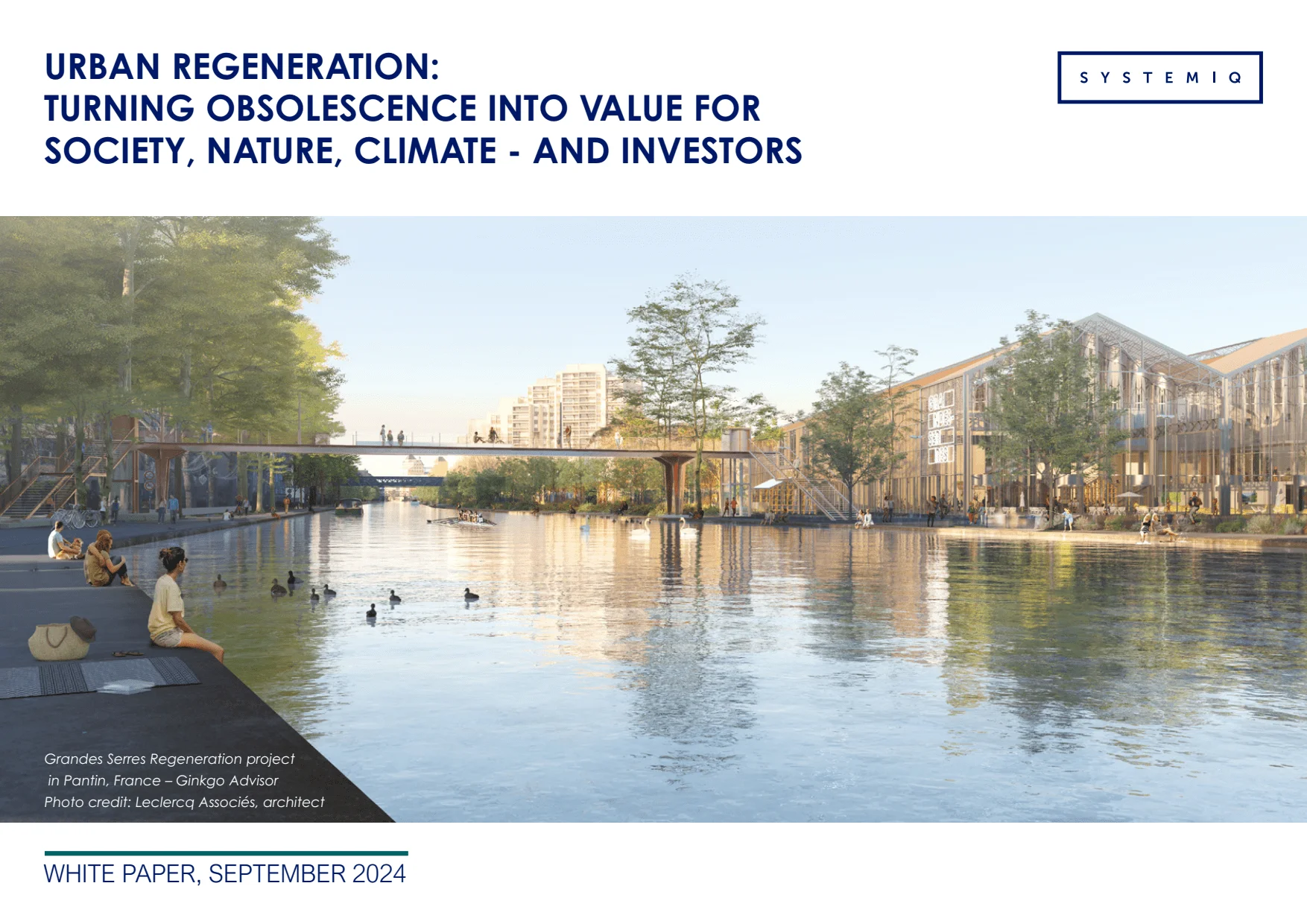📄Context and Overview
The white paper titled "Urban Regeneration - Turning obsolescence into value for society, nature, climate – and investors" was published by Systemiq, a consultancy firm focused on sustainability and systemic change. The document, authored by a team of experts including Julia Okatz and Julie Hirigoyen, aims to highlight the potential of urban regeneration as a strategy to address housing shortages while benefiting the environment and society across Europe.
🌍Urban Housing Demand
Across European cities, the demand for urban housing is increasing significantly. With over 9 million people added to urban populations since 2010, cities are faced with the challenge of updating their economies while lowering emissions and reducing pollution. Urban regeneration aims to transform under-used land and obsolete buildings into vibrant living and working spaces, helping to alleviate the housing crisis while fostering economic growth.
💰Investment Opportunities
To effectively scale urban regeneration, substantial private investment is needed. The paper estimates an investment potential of EUR 4 to 6 trillion over the next 10-15 years. By investing in well-designed urban regeneration projects, investors can generate economic, environmental, and social value while earning reliable long-term returns. This creates a win-win situation for both investors and society.
🏘️Characteristics of Successful Projects
Successful urban regeneration projects share four main characteristics: they create new value from obsolete spaces, foster city-level integration through urban diagnostics, shape destinations through master planning, and are designed for resilience. These projects not only address current urban housing needs but also ensure sustainability and adaptability for future challenges.
📉Challenges and Risks
Despite the opportunities, challenges remain. Many viable brownfields are not located in high-demand areas, and ownership structures can be fragmented. Additionally, land contamination poses a significant risk. However, public authorities are starting to implement incentives to encourage urban regeneration, such as tax breaks and expedited planning permissions.
🌱Environmental and Social Benefits
Urban regeneration has the potential to deliver substantial environmental and social benefits. It can reduce construction emissions by up to 45%, facilitate the regrowth of natural areas, and prevent significant air pollution. Additionally, these projects can improve the quality of life by providing better housing, access to services, and enhanced health and wellbeing.
🔄Long-term Value Creation
Investors who engage in urban regeneration can expect solid returns, with ROI estimates ranging between 12-17% and potential cash multiples of around 2x. The success of these projects is closely tied to effective placemaking, which enhances the attractiveness of regenerated areas, leading to higher land values and decreased vacancy risks.
🤝Collaborative Efforts
To maximize the impact of urban regeneration, it is essential for private investors to collaborate with city authorities. Cities play a crucial role in facilitating private regeneration projects through land sales, master planning, and zoning regulations. Such partnerships can significantly reduce transaction costs and enhance the social value of regeneration efforts.
📈Future Prospects
As urban regeneration gains traction across Europe, it represents a significant opportunity for institutional investors focused on sustainability. By aligning their strategies with urban regeneration, they can address pressing housing needs while contributing to environmental goals, thus driving the regenerative economy forward.

